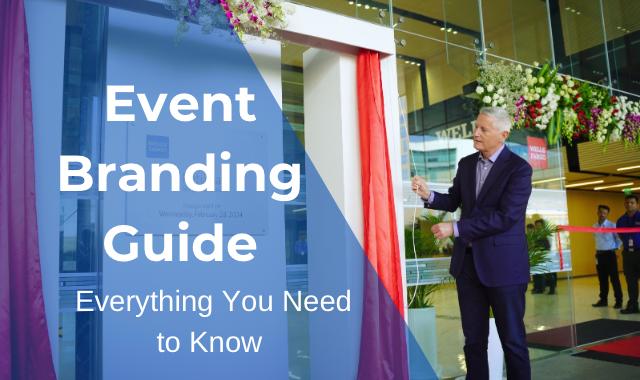How to pull off a brand activation campaign that leaves people talking and jumping – long after it’s over?
We can also make people work for the new brand activation campaigns.
But how is that possible? Yes, a famous brand did this brand activation campaign that left people with a wow. We are talking about the launch of NBA star Derrick Rose’s new shoe line at Adidas. In 2013, when Adidas decided to launch a campaign for D Rose’s new shoe line, they wanted to make it unique and connect the life of D Rose. So, they left the traditional route of advertising in billboards and TV ads and set up the “D Rose Jump Store in London. The catch? the coveted sneakers were placed on shelves 10 feet high, and the only way to get a pair of shoes was to jump as high as Derrick Rose himself.
This was a brilliant brand activation strategy. In this strategy, Adisas was not selling shoes—they were selling the experience of Derrick Rose, even if just for a moment. The campaign created a buzz, drew youngsters to the store, and left a lasting impression. The advantage of attracting kids and youth is more social media shares with hashtags for higher audience engagement and brand visibility.
The people won more than 5,000 shoes, and there were requests from all over the world to create a jump store in their location. Thus, with slight creativity, Adidas sold D Rose experience and increased its sales quadruple times in a year.
Brand activation is an investment in the marketing sector. Campaign success requires a strategic approach and proper evaluation of the performance of the critical indicators.
Key Performance Indicators ( KPIs ) are benchmarks that businesses use to measure the success of their brand activation marketing campaigns. Without clear KPIs, it isn’t easy to track progress and quantify an activation’s success.
Suppose you want your brand to be very successful. In that case, you need to ensure the brand activation campaigns you conducted earlier generate more sales, sign-ups, and positive interactions.
So, what parameters did their campaign use, and how do they know it was truly successful? That’s where measuring the success of a brand activation campaign comes in.
The Key Metrics for Jumping to Success:
When evaluating a brand activation campaign, it is tempting to measure everything. But to be honest, this leads to data overload. We need to focus on the KPIs that really matter to us.
KPI: Measuring What Really Matters
Chasing every metric under the sun is always complicated. So, when it comes to driving brand success, businesses need to zero in on two or three KPIs. These KPIs must perfectly align with your goals and give the most precise picture of your brand’s performance without overloading massive data.
Here are some of the big-ticket items that will actually move the needle
KPIs that Pack a Punch For Brand Activation
Brand Visibility is the marketing KPI super stat that will tell you how loud and proud your brand is performing after a brand activation campaign. Social media measures its mentions, likes, and impression counts. If your brand is buzzing more, then you are better at your work.
Brand activation campaigns are all about bringing in more customers. Audience engagement is like the heartbeat of the campaigns. Your brand’s audience engagement rate will be high only if you have created meaningful posts. The measure of audience engagement is measured by how deeply your brand connects with the people. If the engagement rate is high, then it indicates that your message is hitting home, sparking interest and enhancing loyalty. A close monitoring of these interactions will share insights into the audience’s preferences and strategies to build stronger relationships and drive sustained brand growth and loyalty.
A successful brand activation campaign generates actual leads. This is where the rubber meets the road. Track the number of fresh prospects knocking on the door before, during, and after the campaign. After all, turning heads is great, but turning those heads into paying customers? That’s the real prize.
If you ever want to win a real prize, ping us. We are your best pals for all occasions.
Return on Investment (ROI):
ROI is the ultimate measure of a brand activation campaign’s success. It compares the revenue generated by the campaign to its costs, showing how effectively the investment works for the brand. A high ROI indicates that the campaign not only paid for itself but also delivered significant value back to the business. This KPI helps brands to assess the financial aspect of the campaign efforts.
Customer Lifetime Value (CLV):
Customer Lifetime Value (CLV) is a critical metric that assesses the long-term financial contribution of customers acquired through brand activations. By tracking CLV, brands can understand how much revenue these customers are likely to generate over time. A high CLV suggests that your activation is attracting not just one-time buyers but loyal customers who will continue to bring value to your brand.
Customer Feedback and Surveys:
Feedback is the goldmine of customer insights for any brand activation campaign. By gathering direct feedback through surveys and social media, brands can gauge customer satisfaction, identify areas for improvement, and measure the emotional impact of the campaign. Positive feedback indicates the success of the campaign, and constructive criticism will guide future efforts and ensure that the brand continues to resonate with the audience.
Cashflow and Average Purchase Value:
Monitoring the cash flow and average purchase value of a brand before and after the campaign shares a clear picture of its financial impact. An increase in the cash flow indicates that the activation is driving sales, and a higher average purchase value suggests that customers are spending more per transaction.
Measuring the impact of brand activation on sales is termed sales uplift. Brands can compare sales data before, during, and after the campaign to see if there’s a noticeable increase tied to the activation.
Let us return to the Adidas D Rose Jump store brand activation campaign. The campaign was bold, fun, and simple and perfectly captured Adidas’ essence. It created an immediate buzz, lasting brand loyalty, and a sales uplift.
Brand activation campaigns must be unique, simple, and innovative, building a connection between the audience and the brand. They must also focus on metrics such as brand awareness, growth, lead generation, and sales. By tracking these metrics, brands will get a picture of how far the campaign is and what parameters they need to concentrate on. If you are still stuck in the middle, make a call.




